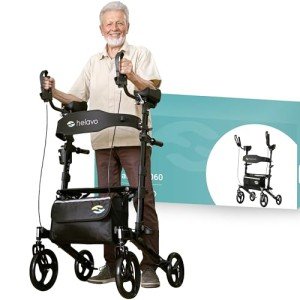As we browse through the diverse landscape of mobility help, one important product stands out: the non-slip walker. This essential tool not just help those with restricted mobility however likewise promotes independence and safety. In this article, we will dive into the benefits of non-slip walkers, the different types readily available, and what features to try to find when choosing the best walker. Along the method, we will address regularly asked concerns and supply insights that enhance understanding of this crucial mobility device.

Non-slip walkers are specifically designed with security in mind. Slips and falls can cause severe injuries, particularly for elderly people or those recovering from surgical treatment. Including anti-slip features into a walker can considerably lower the risk of accidents, making it a crucial choice for anybody in requirement of assistance. Here are a few reasons why a non-slip walker is a worthwhile investment:
Non-slip walkers can be found in numerous styles, each tailored to accommodate different mobility needs. Below is a contrast table highlighting the most typical types of non-slip walkers available:
| Type of Walker | Features | Suitable For | Price Range |
|---|---|---|---|
| Standard Walker | Four legs, lightweight, rubber suggestions | General use, moderate assistance | ₤ 50 - ₤ 100 |
| Two-Wheeled Walker | Two front wheels, 2 rear legs with rubber tips | People who need assistance however can stroll | ₤ 70 - ₤ 150 |
| Top Performance Rollator | Four wheels, braking system, seat choice | Active people; supplies a rest choice | ₤ 100 - ₤ 250 |
| Knee Walker | Developed for people with knee injuries | Short-term recovery from leg or foot injuries | ₤ 80 - ₤ 200 |
| Pediatric Walker | Smaller size, colorful styles | Kids with mobility concerns | ₤ 60 - ₤ 120 |
Choosing the right non-slip walker can be a frustrating job. Here are some elements to bear in mind when making a decision:
While taking a look at non-slip walkers, several additional features can improve user experience:
1. What is the primary difference between a basic walker and a rollator?
2. Are non-slip walkers appropriate for outdoor use?
3. Can a non-slip walker be utilized by people who have had hip or knee surgical treatment?
4. How do I change the height of a walker?
5. Is there a weight limit for non-slip walkers?
6. Can I utilize a non-slip walker in stores or public places?
Investing in a Non-Slip Walker - Https://intensedebate.com/people/gameocean3, can provide users with improved mobility, self-confidence, and independence. The variety of styles and features offered allows users to select a walker that best fits their distinct needs. By considering factors such as weight capacity, adjustability, and extra features, one can guarantee that they or their loved ones are safe and comfortable.
For those seeking to restore their self-reliance, non-slip walkers not just Walking Aid With Seat in mobility however also contribute to a more active way of life. If you or somebody you understand might take advantage of a non-slip walker, take the time to check out the options readily available-- your journey towards increased safety and autonomy starts here!
No Data Found!

